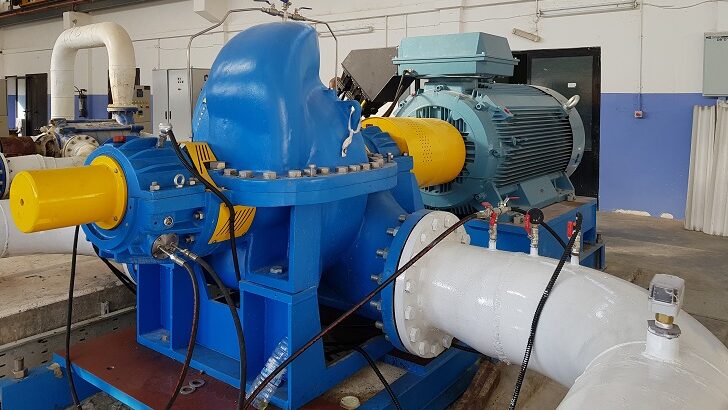- Core Principle of Self-Priming Pumps
- Extensive Flow and Pressure Capabilities
- Superior Solid Handling Capabilities
- Versatility Through Various Sizes and Motor Options
- Ease of Installation and Mobility
- Simplified and Cost-Effective Maintenance
- Enhanced Durability Through Robust Sealing
- Applications Across Industries
- Conclusion
Core Principle of Self-Priming Pumps
Self-priming pumps represent a critical advancement in fluid management technology, offering significant benefits across a broad spectrum of industries. These pumps are especially valued for their unique ability to automatically manage air and maintain prime once initially filled with fluid, making them essential for applications ranging from wastewater treatment to chemical processing. This article provides a thorough examination of self-priming pumps, detailing their features, advantages, and the contexts in which they are most beneficial.
Unlike standard centrifugal pumps, which require manual priming and continuous liquid presence to operate, self-priming pumps are designed to overcome air binding by mixing air with the liquid during the priming phase. This capability stems from a specialized design that includes an air separation chamber or an internal water reservoir, which helps maintain a liquid seal at all times. Once the initial prime is established through filling the pump casing, these pumps can re-prime themselves automatically in situations where air has entered the suction line.
Extensive Flow and Pressure Capabilities
Self-priming pumps boast maximum flow rates reaching up to 5500 GPM (1249 m³/h), which facilitates rapid fluid transfer required in large-scale operations such as irrigation, flood control, and municipal water treatment. The ability to sustain such high flow rates ensures efficiency and time-saving in critical applications.
Moreover, these pumps can deliver pressures up to 260 PSI (182 meters of head), empowering them to push liquids over long distances or to elevated heights. This high-pressure output is crucial for industries that rely on precise and forceful water streams, such as in firefighting, jetting operations in construction, and in various manufacturing processes where high-pressure water is used to cut or clean materials.
Superior Solid Handling Capabilities
A notable strength of self-priming pumps is their capacity to handle solids up to 2.5 inches in diameter. This ability is particularly important in sectors like mining, where pumps need to manage muddy water, slurry, and other debris-laden fluids without clogging. Similarly, in municipal waste management, these pumps facilitate the handling of sewage with unpredictable solid content, ensuring uninterrupted service and reducing maintenance needs.
Versatility Through Various Sizes and Motor Options
The availability of self-priming pumps in multiple sizes allows for tailored applications, accommodating everything from small-scale commercial uses to large, industrial setups. Smaller pumps are often used in portable applications or where space constraints exist, such as in mobile water treatment systems or compact industrial sites.
Furthermore, the choice between diesel and electric motors adds an additional layer of adaptability. Diesel-powered models provide autonomy from electrical sources, which is invaluable in remote or temporary job sites without established infrastructure. Conversely, electric models offer the benefits of quieter operation and no emissions, which are crucial in enclosed or environmentally sensitive spaces.
Ease of Installation and Mobility
Self-priming pumps are available with skid or trailer mounting options, enhancing their operational flexibility. Skid-mounted units are easy to install and provide stable operation in permanent settings. Trailer-mounted models can be quickly moved between locations, making them ideal for rental businesses or construction sites where temporary water control solutions are needed.
Simplified and Cost-Effective Maintenance
Routine maintenance for self-priming pumps is generally limited to checking fluid levels and filters, a feature that significantly lowers their total cost of ownership. The design of these pumps often includes easily accessible internal components, which simplifies repairs and replacements, thus minimizing downtime and labor costs.
Enhanced Durability Through Robust Sealing
The inclusion of liquid bath mechanical seals allows self-priming pumps to run dry for periods without damage—a crucial feature in variable fluid level environments. Additionally, the use of abrasion-resistant silicon carbide for seal faces enhances the pump’s durability and reliability, providing peace of mind in applications involving abrasive or corrosive fluids.
Applications Across Industries
Self-priming pumps find extensive applications across various fields due to their robust features. In agriculture, they are used for irrigation and livestock water management. In the industrial sector, these pumps are essential for process water systems, chemical processing, and thermal power plants. Environmental management also benefits from these pumps, especially in flood control, stormwater handling, and wastewater treatment.
Conclusion
The detailed exploration of self-priming pumps highlights their versatility, efficiency, and indispensable role in modern industry. With features designed to handle a diverse range of operational challenges, these pumps not only improve productivity but also enhance safety and environmental compliance. Whether for managing high volumes of water, transferring fluids laden with solids, or operating in fluctuating water levels, self-priming pumps are a reliable choice for professionals seeking robust and efficient fluid management solutions.
